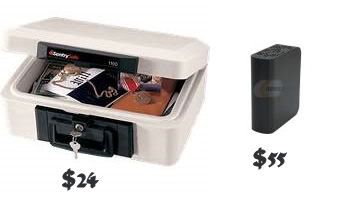Wow, now you can!
After spending money and time on a useless secure "Passport" hard drive that never worked well, I came across TrueCrypt, and have been very happy with it. This came very handy recently after my sister tried to spy on my unattended personal computer.
So, now you can safely and securely hide all those damming "apostate" PDFs, including the most dangerous "apostate" files: Watchtower's old digitized literature.
TrueCrypt is an open source, free software that will create a file in your computer, in a location you define. This file will be "mounted" later and become a drive of the size of the file you create.
There are more than one type of encrypted "drive" (or "volume") you can create, including one of the type "hidden volume" which is very clever but also a bit more complicate to create. To keep things simple, find below the step-by-step instructions on how to create a "Standard TrueCrypt Volume".
Creating a Standard TrueCrypt Volume
1. Download TrueCrypt from http://www.truecrypt.org/downloads (instructions below for version 6.3a, November 23rd, 2009)
2. Unzip the file to any folder and start TrueCrypt.exe.
3. Click the Create Volume button.
4. Screen TrueCrypt Volume Creation Wizard will show.
5. Select the "Create an encrypted file container" option. Click Next.
6. Screen Volume Type will show.
7. Select the "Standard TrueCrypt volume" option. Click Next.
8. Click the "Select File..." button. You will then create a folder and a file name in it, or a file name only in an existing folder.
9. Click Next.
10. Screen Encryption Options will show.
11. Accept the default values for this screen (AES and RIPEMD-160). Click Next.
12. Screen Volume Size will show. Here you will specify the size of the file created in step 8, which will be the size of your new drive. Click Next.
13. Select a password. Click Next.
14. Screen Volume Format will show. Accept the default values. Click Format.
15. Screen Volume Created will show. Congratulations!, your new drive is ready to be mounted.
16. Click Exit, which will close the Wizard and take you back to the main screen.
Mounting the New Drive (or Volume) You Just Created
(This procedure is what you will perform every time you want the encrypted and hidden drive/volume to be visible to you)
1. Start TrueCrypt.exe if it isn't already open.
2. Click the Select File... button.
3. Select the file you created in step 8 above.
4. Select any drive letter from the list of available letters in the big list box, and click the Mount button.
5. Enter the password you assigned to this file/volume.
6. Open Windows Explorer and see your new drive.
7. Congratulations! Now start copying to this drive all those sensitive files.
8. When you're done, restart TrueCrypt.exe (if you have closed it), select the letter of the drive you want to close/hide, click Dismount.
Enjoy! Observador.